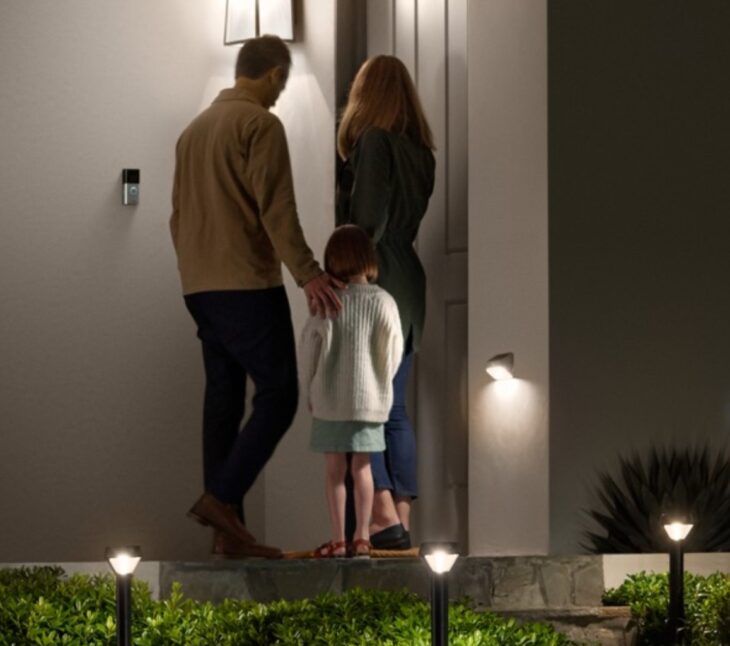Lighting for the outdoors is a vital component of landscape design and something that every home should have. Enhancing your house’s security measures, directing traffic through your yard, highlighting unique aspects of your home or yard, providing task lighting, and illuminating your outdoor living spaces are all benefits of landscape illuminations. To know more about how you can use solar lights to make your house eco-friendly, visit Greenify Power.
In reality, the only question is which sort of outdoor lighting is best for your needs and preferences. Solar, halogen, and LED are the three primary types of energy sources. In this section, we shall discuss the advantages and disadvantages of solar landscape lighting.

Source: alibaba.com
The Pros of Solar-Powered Landscaping Lighting
Before we get started, let’s take a look at some of the advantages of using solar-powered landscape lighting to illuminate your patio, pathway, driveway, flowerbeds, and garden.
- You do not require a nearby supply of power (or any source of electricity) to operate your lights.
- Because landscape lights do not require power, they may be placed nearly anyplace that gets sufficient sunshine throughout the day.
- Your power cost will not be increased as a result of your landscape lighting.
- Your lights may remain on later into the night during the summer months, which may be beneficial during this popular season for entertaining. However, it is not recommended.
- Installation of your lights in a flowerbed or vegetable garden where you will be digging regularly eliminates the need to worry about breaking electrical lines.
- Solar landscape lights are simple to install and may be completed as a do-it-yourself job because they do not require wiring.
- Aside from the initial expenditure, you should anticipate spending little to no money on your solar lights throughout their useful life span. It is because they do not require power and require very little upkeep.
- Solar yard lights are an environmentally friendly option that may help reduce your house’s carbon footprint because they do not rely on energy to operate.
- The possibility of your children or pets cutting, chewing through, or tripping on electrical wires is eliminated.

Source: biling1.com
Cons of Using Solar-Powered Landscape Lighting
Now that we’ve discussed some of the possible advantages of using solar landscape lights, let’s look at some of the disadvantages of using solar lighting to help you decide if this is the best yard lighting for your needs.
- You must install solar landscape lights in a location to receive ample sunlight throughout the day to charge the batteries properly.
- Generally speaking, solar landscape lighting is not a feasible choice in places with large amounts of shade-producing trees, shrubs, bushes, and other vegetation.
- Solar lights are frequently unable to be utilized in areas where buildings hide the sun for a substantial portion of the day.
- You must clean the solar panels regularly to eliminate dust and debris that might prevent the sunlight from reaching the batteries and charging them.
- On overcast days, most solar lights will not last as long as other landscape lighting alternatives after dusk, owing to a lack of sufficient sunshine to charge the batteries in the solar panels completely.
- It is necessary to prune branches and shrubs in the way of sunlight regularly.
- When compared to other types of lighting, solar yard lights often provide less bright illumination.
- You can program landscape lights powered by electricity to stay on for as long as you like every night. However, solar lights can only be left on for as long as their daily charge permits them.
- Solar light batteries should be replaced every two to three years or sooner if they get eroded due to moisture exposure.
- Aside from the fact that solar panels and batteries age faster than other forms of landscape lighting, you will almost always need to replace solar lights more frequently than different types of landscape lighting.
- When it comes to turning on at night, solar landscape lighting requires a sufficient degree of darkness, which means you cannot use them close to other forms of lighting, such as porch lights or string lights on your patio, that is frequently turned on at night.
- The shorter winter days mean that your solar light batteries will not have as much charge and will not last as long as darkness falls. However, this is the time of year when night falls earlier, and you are more likely to require outdoor lighting for evening entertainment for a more extended period than you would otherwise.
- Suppose you want landscape lighting to illuminate a sidewalk or driveway in the early morning hours before the sun rises. In that case, you may find that your solar lights do not charge sufficiently throughout the day to allow them to operate for an extended period at night.

Source: pinterest.com
Final Thoughts
Landscaping lights powered by solar energy have a place in today’s landscape lighting industry. They can be an excellent alternative in locations where laying electrical cables is neither feasible nor practicable. Moreover, they are an excellent alternative for homeowners who want to reduce their carbon footprint or renters who want a temporary yard lighting solution that is simple to install and can be taken with them when they change apartments.
This illumination is frequently not the most excellent option for people who want reliable lighting in the early morning or late at night. It is also not a suitable alternative for people who do not have the time to clean their solar panels regularly or maintain their trees and shrubs to guarantee that their batteries receive the best possible charge each day.
Instead of investing in solar landscape lighting, we propose that you investigate LED landscape lighting, which consumes far less power than previous yard lighting choices and has a significantly longer life expectancy than solar light fixtures.
By contrasting these two alternatives before making a purchase, you will be better able to evaluate the superior option for your specific scenario.
